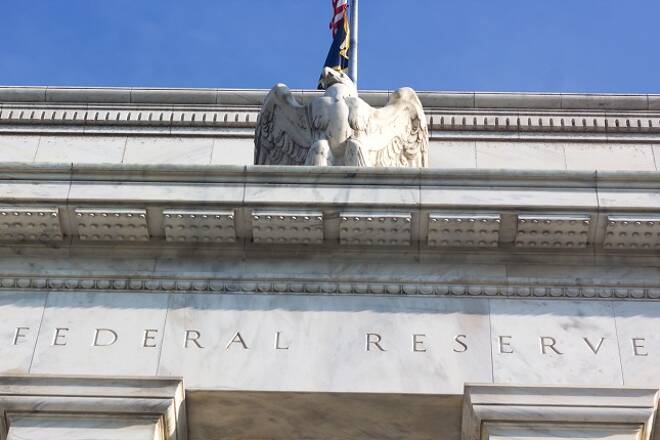Advertisement
Advertisement
Fed Minutes: Patience on Rates, Balance Sheet Runoff Near End
By:
Some analysts are saying they expect to see a balance sheet plan from the Fed by the May meeting minutes, a decision on the matter by June and a halt to the Fed’s runoff by October, if not July. This would then help improve U.S. financial conditions and the financial markets.
The U.S. Federal Reserve, which usually tries to avoid causing excessive volatility in the markets, may have been the source behind Wednesday’s wicked two-sided trading when it decided not to hold its usual lock-up for media members ahead of the release of its latest monetary policy minutes because of inclement weather. Instead, the most important parts of the minutes were released to and published by the news services on a rolling basis. This triggered wild swings in the markets as traders had a hard time determining whether it was dovish or hawkish until all the news was released and posted on the internet.
The minutes themselves were not the source of much volatility. However, the pace at which the data was released had stocks rallying initially then turning lower for the session before turning higher at the close. Gold finished higher, but off its highs. The U.S. Dollar finished slightly lower, but off its lows and U.S. Treasury yields finished flat.
Given the strength in the stock market, one can conclude the Fed minutes were dovish. The movement in gold and the U.S. Dollar suggests a less-dovish tone and the price action in the Treasurys seemed to be neutral.
Core Message in Minutes
The minutes from the Fed’s January meeting, primarily highlighted downside risks, including “the possibilities of a sharper-than-expected slowdown in global economic growth, particularly in China and Europe, a rapid waning of fiscal policy stimulus, or a further tightening of financial market conditions.”
The minutes also showed policymakers held extensive discussion of market conditions, particularly on the emphasis that Fed actions were having on prices of risky assets like stocks and corporate bonds.
Finally, the Fed also concluded that a “patient” approach to interest rate hikes would be prudent as it continued to weigh various headwinds to growth.
Most Important Message from Minutes
After the smoke cleared, we were able to see that the Federal Reserve signaled it may soon lay out a plan to stop letting go of $4 trillion in bonds and other assets, but policymakers are still debating how long their newly adopted “patient” stance on U.S. rates policy will last.
If the Fed had set a specific date to end it balance sheet reduction plan then we wouldn’t have called the minutes outright dovish. So with the central bank indicating it was still debating the issue, we’ll have to call it somewhat-dovish or maybe even noncommittal.
Since policymakers see little risk to leaving interest rates alone while they take time to assess rising risks, they don’t seem to be in a hurry to alter their balance sheet reduction plan.
At this time, it looks as if policymakers have determined that bigger is better when it comes to their balance sheet. They just don’t know how or when they are going to halt the program.
“Almost all participants thought it would be desirable to announce before too long a plan to stop reducing the Federal Reserve’s asset holding later this year,” the minutes said.
Some analysts are saying they expect to see a balance sheet plan from the Fed by the May meeting minutes, a decision on the matter by June and a halt to the Fed’s runoff by October, if not July. This would then help improve U.S. financial conditions and the financial markets.
About the Author
James Hyerczykauthor
James Hyerczyk is a U.S. based seasoned technical analyst and educator with over 40 years of experience in market analysis and trading, specializing in chart patterns and price movement. He is the author of two books on technical analysis and has a background in both futures and stock markets.
Advertisement
